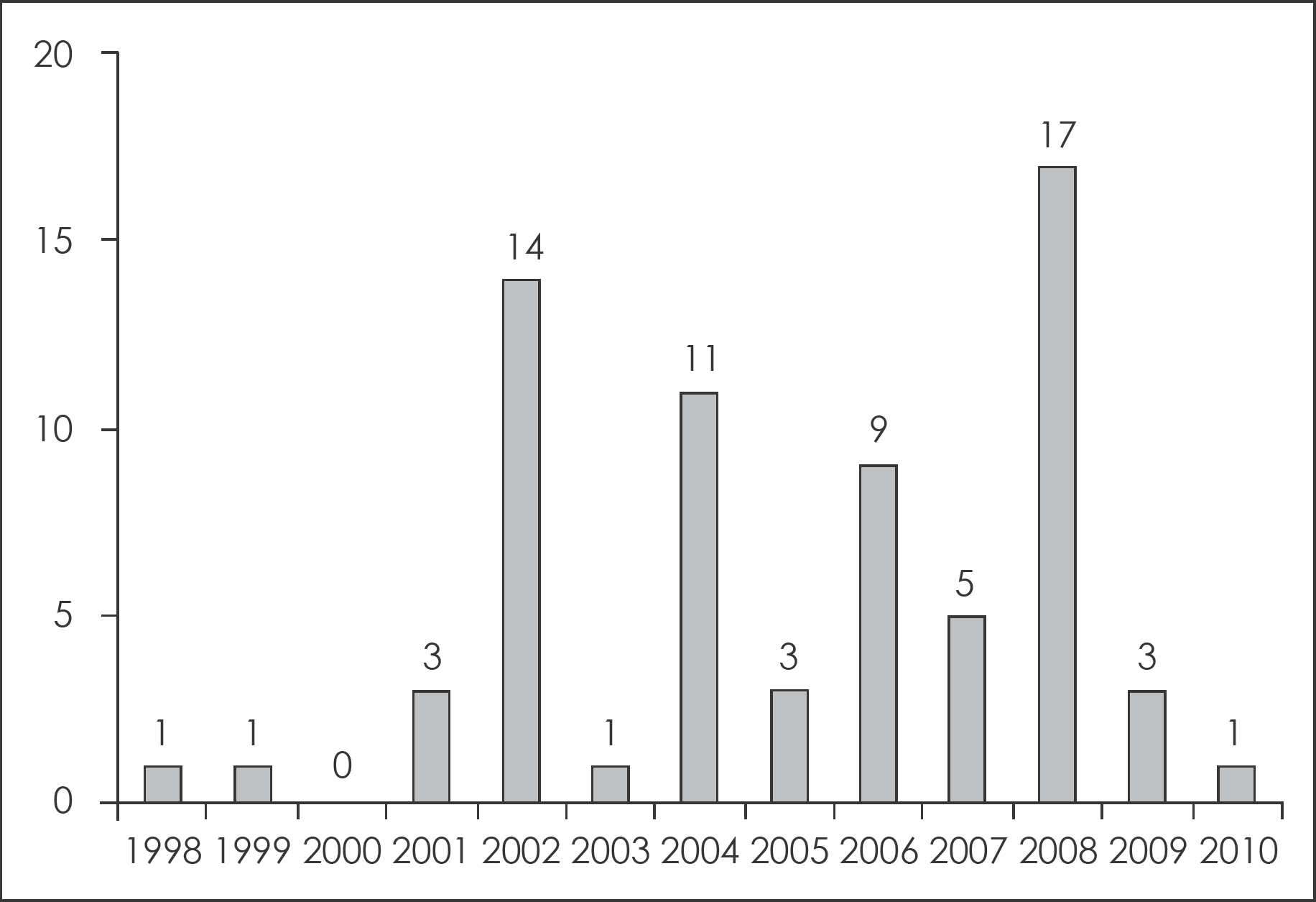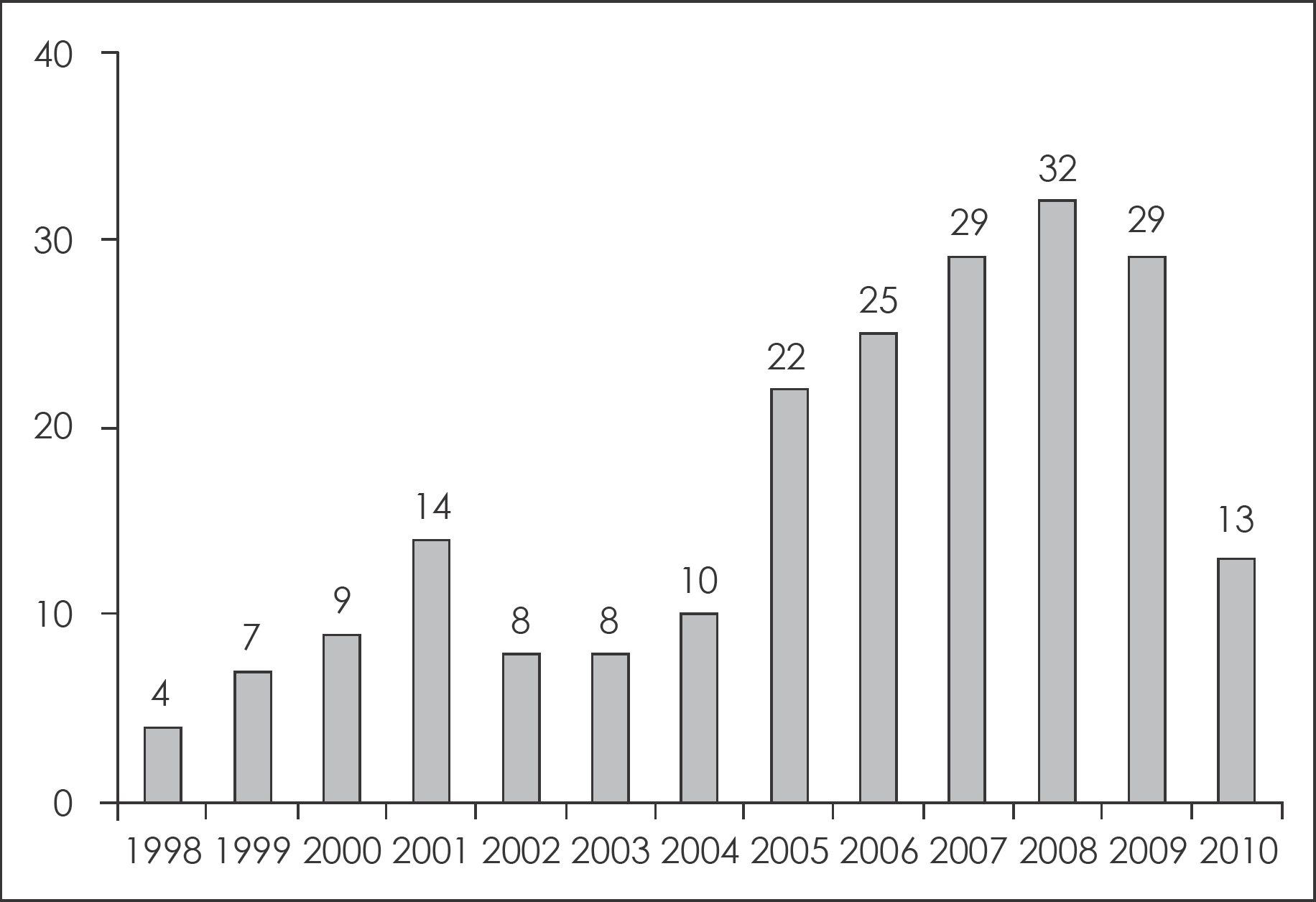Abstract
In Japan prior to 1990s, the national scale of head trauma statistics are only available by the Institute for Traffic Accident Research and Data Analysis. But these have limited data confined to traffic accident trauma by three classification system; death, severe trauma and minor trauma. In the need for easy accessibility of nationwide trauma data, the Japan Neurotrauma Data Bank (JNTDB) Committee was founded within the Japan Society of Neurotraumatology in 1997. The committee carried out the first pilot study involved by 10 medical institutions nationwide to evaluate traumatic brain injury in Japan. In project 1998 of JNTDB, original data sheet with 392 items including etiology of injury, pre-hospital care, initial treatment including neuro-intensive care unit, and surgical treatment, were created. As “Project 1998”, the analysis results have been published in Japan Neurosurgical Society journal. The “Project 2004” was a clinical research on severe head injury cases that have been registered from July 2004 to June 2006. In 2005, one week study of the JNTDB was conducted to elucidate the actual status of head injury in Japan. In the history of during 15 years, JNTDB produced many clinical outputs: 10 presentations on neuroscience conferences and 69 review articles on the famous journals. Consideration of history and achievements of JNTDB suggests guidance to further refinement and direction of future development of Korean Neurotrauma Data Bank. Nationwide and international trauma data bank will be very valuable as a study guide or basic data of the project activities in the future.
Go to : 
References
1. Kawai N, Kuroda Y, Kawakita K, Tamiya T, Nagao S. Role of brain hypothermia and intensive normothermia for severe head injury-Analysis of Japan Neurotrauma Data Bank Project 2004–. Neurotraumatology. 31:91–98. 2008.
2. Lee SK. Korean Trauma Data Bank Committee. Understandings and Key Elements of Trauma Data Bank System. Korean J Neurotrauma. 8:1–9. 2012.

3. Marshall LF, Marshall SB, Klauber MR, Van Berkum Clark M, Eisenberg HM, Jane JA, et al. A new classification of head injury based on computerized tomography. J Neurosurg. 75:S14S20. 1991.

4. Masson F, Thicoipe M, Aye P, Mokni T, Senjean P, Schmitt V, et al. Epidemiology of severe brain injuries: a prospective population-based study. J Trauma. 51:481–489. 2001.

5. Mushkudiani NA, Engel DC, Steyerberg EW, Butcher I, Lu J, Mar-marou A, et al. Prognostic value of demographic characteristics in traumatic brain injury: results from the IMPACT study. J Neurotrauma. 24:259–269. 2007.

6. Nakamura N, Yamaura A, Shigemori M, Ogawa T, Tokutomi T, Ono J, et al. Final report of the Japan Neurotrauma Data Bank project 1998–2001: 1,002 cases of traumatic brain injury. Neurol Med Chir (Tokyo). 46:567–574. 2006.

7. Nakamura T. How could “Data bank neurotrauma in Japan” be launched? Neurotraumatology 33 Suppl:1–2. 2010.
8. Ogawa T, Aruga T, Ueda S, Onuma T, Ono J, Katayama Y, et al. Trial for establishment for Japan Neurotrauma Data Bank System. Neurotraumatology. 21:125–129. 1998.
9. Shigemori M. On the occasion of publication of the results of the inventory Japan neurotrauma data bank. Neurotraumatology 33 suppl.:5–6. 2010.
10. Shigemori M, Ono J, Ogawa T, Tokutomi T, Kawamata T, Sakamoto T, et al. One week study in Japan neurotrauma data bank. Neurotraumatology. 34:1–6. 2011.
11. Yamamura A. Birth and development of Japan head trauma data bank. Neurotraumatology 33 supp.:3–4. 2010.
Go to : 
 | FIGURE 1.Trend of the number of presentation in official meeting using JNTDB [modified from Neurotraumatology (Shinkei gaishō) 33 supplement:8, 2010]. JNTDB: Japan Neurotrauma Data Bank. |
 | FIGURE 2.Trend of the number of articles published in official journal using JNTDB [modified from Neurotraumatology (Shinkei gaishō) 33 supplement:8, 2010]. JNTDB: Japan Neurotrauma Data Bank. |
TABLE 1.
Historical events after launching Japan Neurotrauma Data Bank (JNTDB)




 PDF
PDF ePub
ePub Citation
Citation Print
Print


 XML Download
XML Download